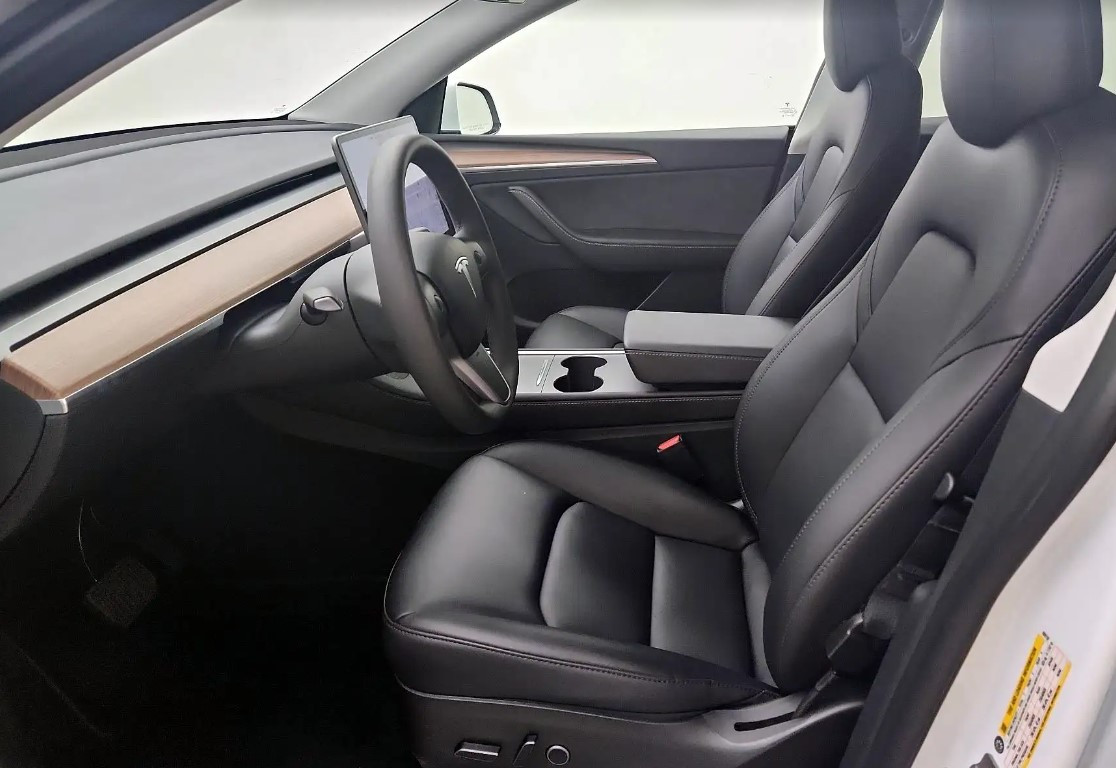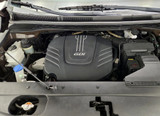Billions Monthly in EXTRA Revenue for Car Manufacturers? There's an App for that!
If you haven't heard about Features on Demand (FoD) yet, this will be an informative article to read. In the next few minutes we'll cover a brief history building up to today's paid service apps now offered by many car manufacturers. These apps have the potential to bring in huge monthly revenue for the automotive industry. FoD is a concept in the automotive industry where car manufacturers offer subscription-based access to customizable features in vehicles. Instead of having all the features built into the car when it's purchased, FoD allows customers to choose which features they want and pay a monthly fee to use them. That might be the best way for the car manufacturers to describe this to their customers. From the car owner's perspective it sounds more like, we have to pay to unlock features that already exist in the vehicle we purchased. It's a little more complicated than that, let me explain.
Some of the most common features that would be paid for monthly through FoD include things like advanced safety features, convenience features, connectivity options, security enhancements, and improved driving performance. Examples of these features could be heated seats, remote start, remote unlocking, over-the-air upgrades for software and technology, and access to specific applications or services through the car's infotainment system.
GM was one of the pioneers of a this idea long ago.
OnStar is a subsidiary of General Motors (GM) that provides in-vehicle communication services and assistance. It was launched on August 28, 1996, and initially offered a range of features focused on emergency assistance and vehicle security.
When it was first introduced, OnStar provided services such as automatic crash response, emergency services dispatch, roadside assistance, stolen vehicle tracking, remote diagnostics, and hands-free calling. These features were made possible through a combination of cellular technology, GPS positioning, and a dedicated call center. OnStar was one of the pioneering services in the field of in-vehicle communication and assistance, but it was not the very first app of its kind. Prior to OnStar, there were a few other initiatives and technologies that provided similar functionalities.
For example, in the 1980s, BMW introduced a system called "BMW Assist" that offered services like emergency assistance and remote diagnostics. It utilized a cellular connection and allowed drivers to communicate with a call center for help or information.
Another notable precursor to OnStar was the "Mercedes-Benz Tele Aid" system, which was introduced in the mid-1990s. This system provided emergency calling and roadside assistance, similar to what OnStar offered. It used GPS and cellular technology to enable communication between the vehicle and a dedicated call center.
It's worth mentioning that while these early systems provided some level of in-vehicle communication and assistance, they were not as comprehensive or integrated as OnStar. OnStar played a significant role in popularizing and refining the concept, and it became widely recognized as a leading provider in this field.
The Rise of Features on Demand: Challenges, Opportunities, and Revenue Projections in the Automotive Industry
The automotive industry is experiencing a transformative shift as automakers embrace Features on Demand (FoD), offering subscription-based access to customizable vehicle features. While this trend presents challenges and opportunities, including low consumer awareness and skepticism, projections indicate substantial revenue potential for manufacturers. A recent study by Cox Automotive Research and Market Intelligence sheds light on consumer perceptions, while specific automakers like Hyundai, BMW, Mercedes, Toyota, and Ford make significant strides in this evolving landscape.
Low Consumer Awareness and Skepticism: According to the study, consumer awareness of FoD remains low, with only 21% of in-market shoppers familiar with the concept. Skepticism persists, as 75% of respondents believe FoD primarily benefits automakers' revenue generation. Additionally, 69% of respondents express a likelihood to explore alternative brands if certain features are available exclusively through subscriptions.
Projected Revenue Potential: Despite these challenges, FoD presents a significant revenue opportunity for automakers. Projections suggest that subscription-based services could generate substantial monthly income for manufacturers. While exact numbers may vary based on factors such as subscription pricing and customer adoption rates, industry experts estimate that automakers could potentially generate billions of dollars in revenue each month through FoD subscriptions.
Hyundai's Software Defined Vehicles (SDVs) and Revenue Outlook: Hyundai's ambitious plan to transform its entire lineup into Software Defined Vehicles (SDVs) by 2025 opens up new revenue streams. With over-the-air (OTA) upgrades for safety, convenience, connectivity, security, and driving performance, Hyundai can offer FoD services to customers. Projections indicate that Hyundai's SDV strategy could generate significant monthly revenue through subscription-based feature enhancements.
BMW, Mercedes, and Toyota: Revenue Opportunities and Costs: Automakers like BMW, Mercedes, and Toyota have already ventured into the realm of FoD. BMW's introduction of subscription pricing for features like heated seats showcases revenue potential, while Mercedes offers power unlocks for its EQ-series EVs through subscriptions. Toyota's fee-based subscription model for certain app features further emphasizes revenue opportunities. Although specific subscription numbers and costs vary, projections suggest that these automakers could generate substantial monthly revenue through their FoD offerings.
Ford's Complimentary Services and FoD Revenue Potential: Ford Motor Company stands out by offering certain key services, such as remote start and remote unlocking, for free through its FordPass app. While some services are complimentary, projections indicate that Ford's FoD approach could still generate significant monthly revenue. By leveraging its over-the-air software update program, Ford Power-Up, and introducing paid FoD features, Ford has the potential to tap into a lucrative revenue stream.
Tesla may not call it FoD but charging for connectivity sounds very similar to me. Tesla has made changes to its connectivity packages for its vehicles. If you ordered a new Tesla before July 20, 2022 you will not have to pay for turn-by-turn directions and other services included in the "standard connectivity" package. However, if you purchased a Tesla after July 20, 2022 you will start receiving a bill for these services after eight years, although the specific fee for year nine has not been disclosed.
Tesla offers two tiers of connectivity. The standard package includes navigation but lacks live traffic information and has been free for the car's lifetime. Now, it will be free for the first eight years. On the other hand, the upgraded "premium connectivity" package provides additional features such as in-car Wi-Fi, navigation with live traffic updates, and monthly entertainment downloads like karaoke and games. Premium connectivity costs $9.99 per month or an annual fee of $99.
Unlike many other cars that allow users to connect their phones for navigation and music streaming, Tesla does not offer Apple CarPlay or Android Auto. Therefore, premium connectivity becomes the only way to access these features in a Tesla.
The 8-year period of free connectivity starts from the first day of delivery or the first day of service for demonstrator vehicles. This policy also applies to used cars, meaning that if you purchase a used Tesla less than eight years old, you will receive the remaining free period.
While Tesla's move may be seen as part of a larger trend of subscription services in the automotive industry, where automakers charge monthly fees for certain features, it has garnered less controversy compared to recent actions by other manufacturers, such as BMW charging for features like heated seats.
The rise of Features on Demand and other subscription services presents both challenges and opportunities for automakers. Despite low consumer awareness and skepticism, FoD offers significant revenue potential. Projections indicate that monthly income from FoD subscriptions could reach billions of dollars for automakers. As Hyundai, BMW, Mercedes, Toyota, and Ford continue to pioneer FoD offerings, they have the opportunity to capture a substantial share of this growing market. By addressing consumer concerns, offering compelling value propositions, and strategically pricing their subscription features, automakers can unlock new revenue streams and shape the future of personalized mobility experiences while meeting evolving consumer demands. It's my belief that even the most resistant among us, will be slowly lulled into agreeing to pay for many of these "features".
Wise Auto Tools' commitment over the years has been to provide our readers and customers with car repair articles and supply specialty tools to help them complete their projects. Remember to save our website as a favorite and consider us for your upcoming automotive tool needs.
Recent Posts
-
Head Bolt Stripping in Kia and Hyundai Engines: How Common Is It and How to Fix It
A customer recently emailed us with a great question: “What percent of Kia vehicles would you …9th Jul 2025 -
Pentastar 3.6L Head Bolt Thread Repair on a Budget
We recently received a great question from Michael, a DIYer facing a common problem of stripped thre …19th Mar 2025 -
Save A Thread Blown Out! Larger Thread Repair Needed
When a Save-A-Thread insert fails, it can leave the spark plug hole in your engine significantly lar …8th Jan 2025




